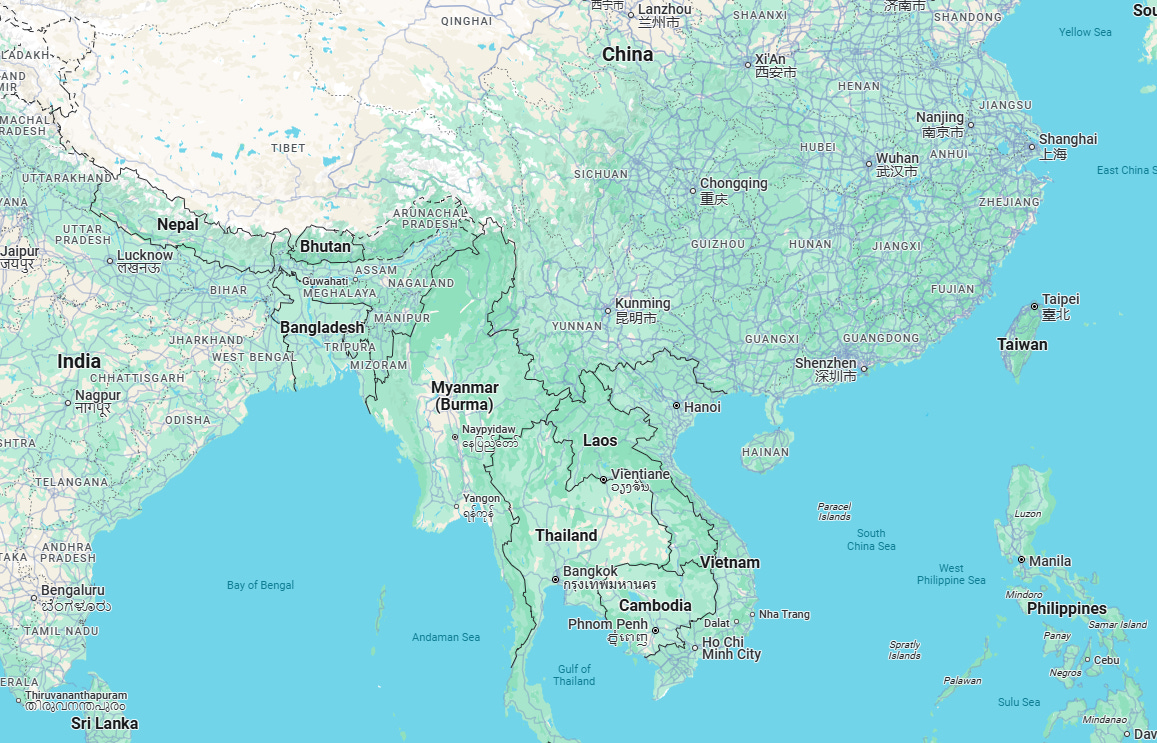What happened?
On Friday, March 28th, a 7.7 earthquake struck Myanmar and was the most powerful earthquake in the country since 1912. Myanmar lies on a major tectonic plate, the Sagaing Fault, which runs north to south. This quake was estimated to be equal to over 300 atomic bombs.
The epicenter of the earthquake was really close to Mandalay, the second-largest city in the country with a population of 1.5 million people. Mandalay, Myanmar’s former royal capital, is known as the ‘city of gold’ with incredible Buddhist monasteries and gold-capped pagodas. To date, more than 3,500 people have died with ongoing rescue efforts. In the coming weeks, that number is expected to soar with estimates over 10,000. An additional 5,012 were injured. In addition to the loss of life, a reported 5,223 buildings, over 1,800 schools, 4,800 temples and pagodas, and 167 hospitals and clinics were damaged.
Myanmar, war, and poverty
Myanmar is a lower middle income country in Southeast Asia with a population of 54 million people. Since 2017, poverty had doubled from 25% to 50%, in large part due to a devastating civil war and a military coup. Poverty is now widespread, essentially wiping out the middle class gains the country had made prior to the war.
The past civil conflicts have affected the country’s infrastructure, and poverty has worsened all metrics of human rights. The International Crisis Group (ICG) said that, prior to the earthquake, more than 3 million people had already been displaced since the coup and were already in need of humanitarian assistance. So, when the quake hit, it multiplied the needs. The ICG representative said:
“This is not just a disaster; it is a complex humanitarian crisis layered over existing vulnerabilities. My real worry is that the international community will not respond in the scale that is needed.”
The world’s response to the earthquake and the US’s absence
In response, China has pledged $13.8 million in humanitarian assistance and sent more than 135 rescue workers. Russia sent a team of 120 specialists and doctors. The UK, Ireland, and Australia have pledged $20 million.
Then, the US finally pledged a USAID team and $2 million in aid. But that came days after the earthquake. China went within hours.
The first 24-72 hours is the most critical time after an earthquake to save lives of people that are trapped. It is a small window of time and an all-hands-on-deck approach is usually what is given from an international aid perspective and has historically been led by the US. This time though, that did not happen. USAID has historically maintained a dedicated team of experts to quickly respond within hours to disasters like these. On the day of the Myanmar quake, a State Department spokesperson (because USAID was largely disbanded with intense layoffs and absorbed into the State Department with the Trump administration) said the “United States is evaluating the need for assistance based on requests and dynamic reporting.” On Monday, three days after the quake, the spokesperson said, “I would reject the premise that the sign of success is that we are physically there. The fact that we’ve got partners that we work with, that are goals can achieved through the work that we do with others around the world, is something.”
What in the world. That’s just not true. You have to physically be there. You need to quickly be on the ground with the highly trained response teams, sniffer dogs, and equipment to save people. You have a limited amount of time to help, and we’ve missed it.
The spokesperson then mentioned that a USAID team was now traveling to the area to “identify the people’s most pressing needs”. Three days later.
That team (brace yourself) has three people.
If you just sat back in your chair and cried, you would not be alone. I’m right there with you.
This type of US response is certainly not humanitarian. It feels cruel and unwarranted. This is not what the US does. Let me show you. In Turkey two years ago, a comparable 7.8 earthquake, killing 50,000 people and displacing millions, struck close to the Syrian border with an immediate response from the United States. Within hours, $85 million was pledged with an additional $100 million about 2 weeks later. And, 225 USAID workers were immediately deployed. (Sadly, I went to find the original White House authorization document from President Biden for this response to link for reference and both that document and the USAID response team document outlining these assistance details are gone off of the WH and USAID websites. Screenshot of the WH document below.)
When we are thinking of the deployment of 225 highly trained rescuers and workers to Turkey two years ago in response to the earthquake, these are the people loading pallets and pallets of water, food, medical equipment, and machinery to help with search and rescue. This (the picture below) is what it should look like - not 3 people sent to Myanmar. (Here is a picture of some of the Urban Search and Rescue Members being sent to Turkey in 2023.)
What happens when USAID is disbanded
Now we know the effects of what happens when USAID is dismantled. In Turkey in 2023, USAID sent 225 people and the US pledged $185 million. Now in Myanmar in 2025, 3 people were sent and the US pledged $2 million. Also, the search and rescue team in the picture above recently had their USAID contracts canceled by DOGE. The contracts have since been “reinstated,” but only in words. NPR reported that they {the response team]
“do not have USAID funding to transport crew members and their specialized gear to the scene of the earthquake. Search and rescue groups also need to be accompanied by experienced USAID staff who know the region well, but most of these employees have been terminated.”
To date, Myanmar is the “least funded emergency in the world” so far, as stated by the WHO deputy lead in the country. In the past, USAID, in large part, led the way in coordinating responses to disasters such as these and led the way in contributions. This time, the UN Office of Coordination of Humanitarian Affairs, known as OCHA, has cobbled together a mere $5 million.
“But, Emily, you can’t blame this all on the cancelling of USAID and lack of timely US response.” Well, you kind-of can. The perfect storm of the USAID cancellation of 90% of projects and firing of staff that were already in Myanmar who could have been on the frontline of the response coupled with the dismal response of money or people (again, because of USAID and foreign aid cuts) means that people die unnecessarily and children are going hungry and without water. It means that diseases always seen after disasters like these, such as cholera, will run rampant. And, it’s avoidable.
Almost all of the 500 people that made up the USAID Bureau of Humanitarian Assistance (whose job is to respond to disasters just like this earthquake) were fired. In a cruel turn of events, Chris Milligan, former USAID Mission Director in Myanmar in 2012-2016, said that the Bureau staff were fired the day of the earthquake. Hours after the earthquake hit and the world knew about it.
The lack of response is also not because of the military junta that is in control of Myanmar. You might have seen reports that aid couldn’t get into the country because of the junta (and that’s why the US isn’t on the ground). That’s not true though. Even the junta has made a rare plea for help. CNN reported on March 28th (the day of the earthquake) that:
“Min Aung Hlaing – the leader of Myanmar’s military government – declared a state of emergency and issued an “open invitation to any organizations and nations willing to come and help the people in need within our country,” adding the toll was likely to rise.”
My Summary
Living as global neighbors, to me, means not looking away from the reality of the global powers. Sadly, Myanmar is caught in the middle of global power-players acting un-neighborly (selfish? cruel?). We have international and diplomatic systems in place for humanitarian crises just like these. We have a playbook that saves lives in the humanitarian space. The US response to Myanmar, though, is certainly not working according to the plan. These global situations are complex, yes. Each country is a mix of long-standing history including war, coups, diplomacy (or the lack thereof), colonialism, poverty, and development. However, countries do not stand by themselves. They do not fall by themselves, either. Globalism, to me, understands the interconnectedness of our own country with the others (and vice versa), while also recognizing leadership and power can be wielded for the global good. Not for selfish gain. No matter how you slice it - economics, health, neighboring, development - We really are better together as a world.
In solidarity,
Emily











Every day, I read something that makes me sick about what this administration is doing. Today your article is at least the 4th that’s made me nauseous with sadness and frustration. 😭 I don’t understand how any of this is “pro-life”, yet so many of my “pro-life” friends voted for this ugliness. So hard.